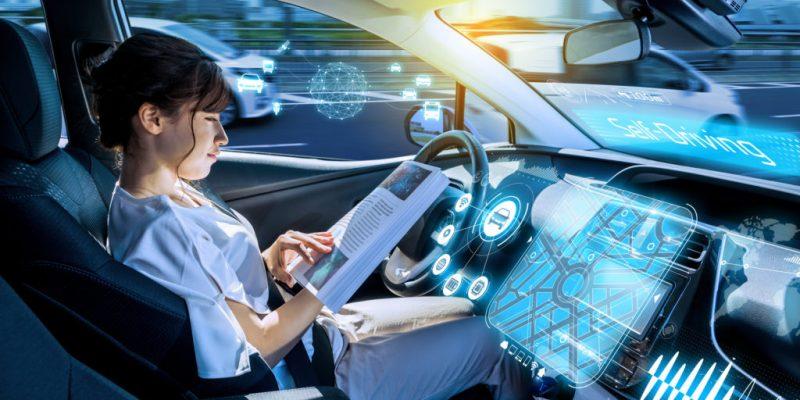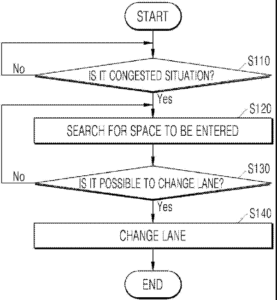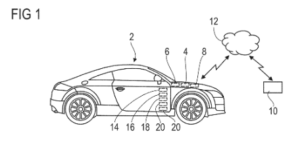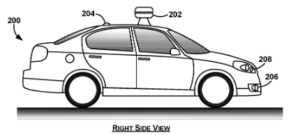
Autonomous Vehicles: The Future Ahead
The quest for the application of scientific knowledge for practical purposes started long back. Like back in 1990, who would have thought that while sitting in our home we would be able to get updates from all over the world on a 5.5-inch display, or we would cover a distance 10km in few minutes. We are surrounded by technological advancements which have made our life simpler as well as comfortable and with each expanding day, we are searching for approaches to make headway in every bit. One such enticing and hyped progression which has been a topic of discussion for more than 50 years is an autonomous vehicle or a driverless vehicle.
An autonomous vehicle is a set of sensors and actuators, sophisticated machine learning algorithms for quick decision making and powerful processors. Moreover, an autonomous vehicle is a perfect amalgamation of mechanical and programming frameworks coming together to make a vehicle that can run without human supervision.
The entire idea of “driverless” or “autonomous” vehicles on the road has raised interest among various sections of society. Relatively, few people believe that it could not be possible to run a vehicle without human intervention and deny its possibility. Also, why they shouldn’t – after all there are so many moving parameters in the driving function that is needed to be handled and controlled simultaneously and even a single failure could be highly disastrous. The five different levels can define the level of driving automation in a vehicle ranging from 0 to 5, 0 being the basic level as directed by the Society of Automotive Engineers (SAE). At a basic level 0, there is a human driver that is controlling all the basic functions i.e., brakes, accelerator, steering, etc. In level 1, most of the functions are still controlled by humans but some specific functions such as brakes, accelerator, steering, etc. can be done automatically by the vehicle one at a time. Further, Level 2 is the partial automation where two or more driving technologies work simultaneously, such as Tesla Model S with the Autopilot system that has lane changing, adaptive cruise control, and self-parking functions. Level 3 is called as eyes-off vehicle because vehicles that fall under this category can run without human intervention. However, level 3 has limited automation capabilities; therefore it is also known as conditional automation. The Audi AI traffic jam pilot system is the world’s first framework that empowers SAE level 3 conditional mechanization. Further, the vehicle under level 4 depicts high automation i.e., full automation in most of the conditions. However, under some circumstances, human intervention is required. Level 5 depicts a fully automated system i.e., a vehicle that takes all the decisions on its own and moves without the oversight of humans in all conditions. Such systems don’t even require conventional parts such as steering, etc. Examples of level 5 vehicles are Audi Aicon and Rolls-Royce 103EX.

Figure shows Rolls-Royce 103EX – Fully Automated System
Several major market players like Tesla, ZF, Google Waymo, etc., are trying their best to achieve out models with full automation. We have level 3 cars in the market and level 4 vehicles are still in the testing phase. If we conquer this, that means the finishing line is near. However, there are numerous challenges that are acting as a barricade between a fully autonomous vehicle and humans. Some are mentioned below:
an efficient decision-making AI/ML algorithm: When we talk about an autonomous vehicle, we realize that computerized reasoning is driving the vehicle and we need advanced machine learning algorithms for precise decision-making such as lane changing decisions, speed control decisions, etc.
A patent US20200079380A1 by LG suggests an efficient way of decision-making for changing lanes. The method discloses an apparatus in the autonomous vehicle determines the congestion in the lane and based on the congestion information autonomous vehicle changes the lane.

Figure shows the lane changing method
a powerful safety system: According to National Safety Council (NSC), last year in the USA i.e., in 2019 around 38,800 people lost their lives to car crashes and about 4.4 million people were injured seriously enough to require medical attention in crashes. On average, 84% of the accidents take place due to human error, and an attentive AI system can solve the problem because it never gets tired and can work non-stop without losing its alertness. It is the perfect combination of sensors, actuators, machine learning algorithms that can take decisions in every scenario. But the difference between manual driving and automated driving is the common sense which a computerized system lacks.
Walter Steven Rosenbaum has proposed a method in a patent US20190308619A1 by in his suggests preventive measures for this sought of a query. The study is related to the assessment of autonomous-driving quantity with a majority of manual-driving quantities, which are determined from a minimum of one driving parameter during manual driving periods of various driving units and henceforth determining an autonomous-driving accident rate value from accident rate values associated with the manual-driving quantities. With the autonomous-driving accident rate value derived, a weak point of the autonomous-driving control system can be detected, and the software can be enhanced to reduce the autonomous-driving accident risk.

Figure shows a passenger car with artificial intelligence software for autonomous driving
an adaptive system: Weather conditions also act as a challenge as there could be sunny weather or rainy weather or stormy weather and the autonomous vehicle should work in all types of weather conditions. Waymo suggests a method in a patent US20190179052A1 to counter this type of situation. The method describes sensors in a vehicle that collects data related to environmental conditions. In response to the collected environment conditions, the autonomous vehicle is controlled.

Figure shows an autonomous vehicle with sensors to detect environmental conditions
Tamper-proof system: A tampered autonomous vehicle could cause mass havoc. Building a tampered-proof system is also one of the biggest challenges. Two years ago Charlie Miller, a researcher in NSA and Uber, demonstrated a method to pull-off a Jeep running in a highway by remotely hacking Jeep Cherokee via its internet connection. Further, he said securing autonomous cars from hackers is a very difficult problem. It’s time to get serious about solving it.
In addition to the above challenges, there are some unpredictable global events such as Covid-19 that could severely impact the research & development activities around the autonomous vehicle technology domain. However, if we think about future where we have running autonomous vehicle, then, the global pandemic like Covid-19 creates opportunity areas for companies like Amazon, eBay, etc., to adapt autonomous vehicles as an alternative to the delivery agents as it helps in delivering the necessary items to the people without spreading the virus.
There are several challenges for rolling out the driverless vehicles; however, “early rider” service in Phoenix by Google Waymo displays a perfect example that we are on the verge of getting a Level 5 automation driving system soon. Therefore, we could see autonomous vehicles running around us with full efficiency and comfort soon. There are some glitches as this technology needs a powerful system that can manage every task in every environment. But surely in the future, we are seeing a much-advanced system capable of carrying a man without human intervention.

